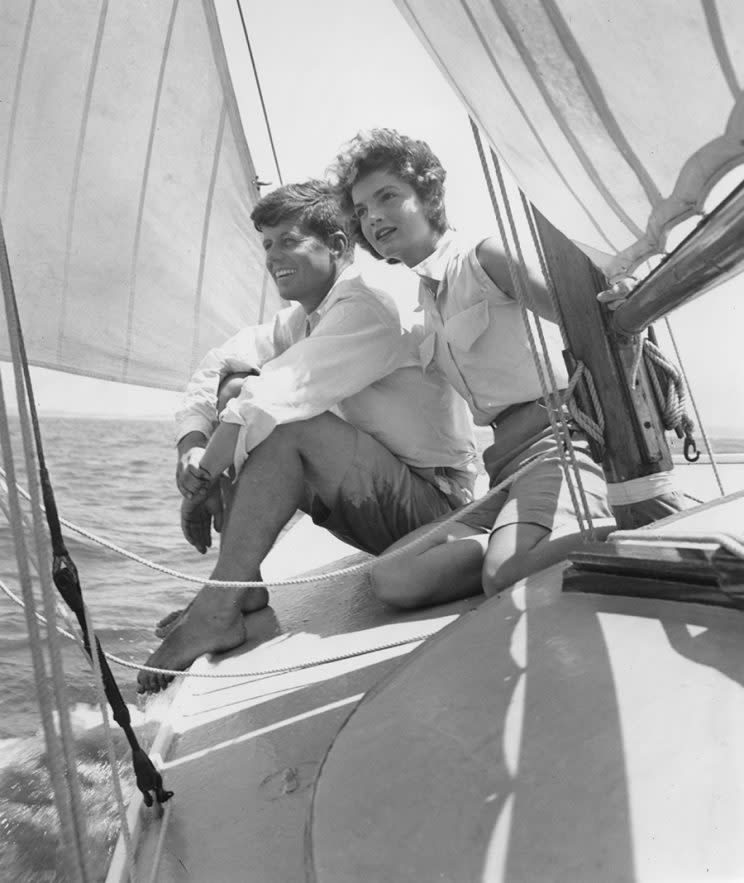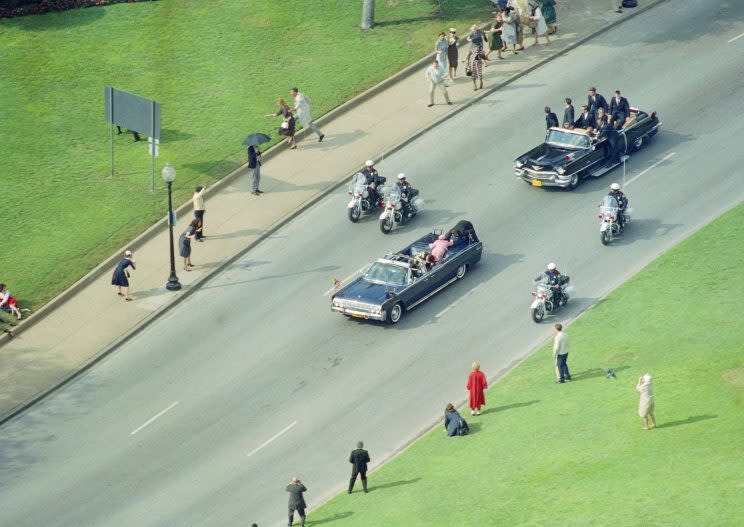JFK's Health Complications Were More Severe Than Most of the World Ever Knew

John F. Kennedy’s legacy as the picture of boyish youth and health is one that endures even today, 54 years after he was gunned down. But it’s one that was artfully crafted to hide his many illnesses and chronic pain, which led him to multiple risky surgeries and, on more than one occasion, the brink of death.
That truth behind that public image was first revealed in 2001 by JFK biographer Robert Dallek, who was granted access to startling medical records by the Kennedy family. Now a new essay published in the Journal of Neurosurgery: Spine, from two neurosurgeons who review case notes written by doctors caring for the late president, delves more deeply into his back problems, exposing even more excruciating details.
“John F. Kennedy’s back: Chronic Pain, Failed Surgeries, and the Story of its Effects on his Life and Death,” by T. Glenn Pait, MD, and Justin T. Dowdy, MD, looks closely at the health issues that plagued him — including scarlet fever at the age of 3, gastrointestinal disease, Addison’s disease (an adrenal gland disorder), and crippling back pain, most of which remained a total secret beyond his immediate circle until Dallek was granted access.

“JFK’s father, Joe Sr., groomed his children from an early age to be successful figures in the public sphere, even bragging early on that oldest son Joe Jr. would become president. As such, the family sought to limit public knowledge of the many health maladies of the Kennedy children,” Dowdy tells Yahoo Beauty regarding the closely guarded health secrets of the president.
He continues, “Although rumors swirled in the 1960 presidential campaign about Senator Kennedy’s serious health problems, specifically Addison’s Disease, Kennedy’s political team and doctors crafted a carefully-worded denial. Kennedy’s family likely kept his medical records secret for so long after his death due to the desire to protect the carefully crafted image of a dynamic, vigorous, young president. Historically, presidents have sought to downplay their physical maladies as a matter of political survival and, to a large degree, to avoid projecting anything but strength on the world stage.”
Kennedy was not the first president to mask health problems in order to maintain a strong image, of course — with Franklin D. Roosevelt, Woodrow Wilson, and Grover Cleveland also famously hiding issues from paralysis to cancer. But the details about the extent of what JFK withstood in secret are profound.
“At least one half of the days that he spent on this earth were days of intense physical pain. …And I never heard him complain. I never heard him say anything that would indicate that he felt God had dealt with him unjustly,” the essay quotes Robert F. Kennedy as stating after his brother’s assassination. “Those who know him well would know he was suffering only because his face was a little whiter, the lines around his eyes were a little deeper, his words a littler sharper. Those who did not know him well detected nothing.”

Among the details scrutinized in the essay:
JFK suffered several illnesses before graduating from prep school that almost killed him; he was plagued with back problems for his entire life that began after sustaining a football injury during his time at Harvard in 1937. In 1940, he was diagnosed with a “very unstable lumbosacral joint” and began a long series of treatments.
When he was drafted at the age of 23, JFK repeatedly failed physicals due to back problems. He was accepted into the Navy because of family connections and sent to the Pacific in 1943, when a now-famous incident of bravery occurred: Kennedy’s boat was hit by a Japanese destroyer, stranding him and his surviving shipmates and inspiring JFK to swim for five hours — while towing a wounded crewman — to a nearby island. His back problems worsened from then on. (He was ultimately discharged from the Navy due to gastrointestinal disease.)
Treatments for his back went on and on, plaguing him through his shift to politics — with spinal surgeries requiring heavy doses of post-op narcotics; a daily regimen of massages, hot baths, and the use of a corset brace; and, during his first congressional term at the age of 30, a supposed reaction to the steroids he used to treat his gastro issues that made him so ill, he was read his last rites by a Catholic priest.

Willing to risk his life in order to move past the constant pain, Kennedy opted to endure a spinal fusion surgery with an implant that was highly risky due to his Addison’s disease. It left him hospitalized for two months in an induced coma with a urinary tract infection and with a staph infection at the incision site, which was described as “an open wound that seemed to be infected all the time. And now and then a piece of bone would come out of the wound. His pain was excruciating.” He was once again read his last rites.
Days before the Democratic National Convention in July of 1960, running mate Lyndon Johnson publicized JFK’s Addison’s Disease diagnosis and asked for an evaluation of his overall health. Kennedy still won the democratic nomination, but campaigning took a toll on his back — leading him to try injections of amphetamine-derived “vitamin cocktails” from the German Dr. Max Jacobson, nicknamed Dr. Feel Good. He used these illicit injections before his pivotal first televised debate with Richard Nixon, knowing how important his appearance would be.
Once in the White House, Kennedy began to work with noted Austrian orthopedist and physiatrist Hans Kraus, who put him on a program of massage and heat therapy, lifting weights three times per week, and swimming in the White House pool almost daily, which resulted in drastic improvement within months. By summer of 1962 Kennedy’s condition improved dramatically and Kraus aimed to wean him from his back brace.
Finally, JFK’s extensive back issues are believed to have impacted what happened when he was shot in 1963. Dr. John Lattimer, a physician expert to the assassination and the first non-government official to review autopsy photographs and clothing, believes the president may have survived if not for his tightly bound brace — which could have returned him to an upright position after the first survivable gunshot hit his back. It’s a theory that’s been previously floated, stressing that if not for the brace, he might have fallen forward and remained out of the line of fire for the second, fatal shot.
Read the full essay here.
Read more from Yahoo Style + Beauty:
Americans Haven’t Voted a Bald President into Office Since the Advent of TV
Here’s What Donald Trump Revealed About His Health on ‘Dr. Oz’
What President Trump Eats Every Day — and Why This Nutritionist Has Her Concerns
Follow us on Instagram, Facebook, and Pinterest for nonstop inspiration delivered fresh to your feed, every day. For Twitter updates, follow @YahooStyle and @YahooBeauty.
